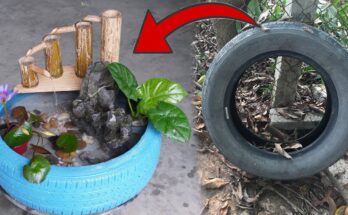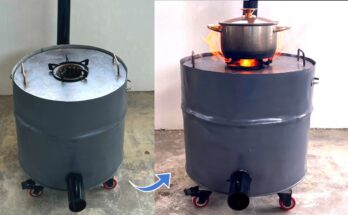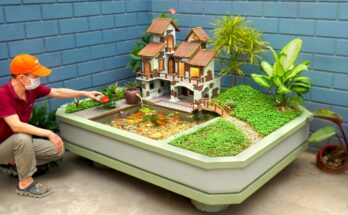Cutting fodder for livestock can be time-consuming if done manually, especially when dealing with large amounts of hay, grass, or crop residues. A chaff cutter is an essential tool for farmers, allowing them to prepare feed efficiently. While commercial chaff cutters can be costly, this DIY project shows you how to repurpose an angle grinder into a functional, cost-effective chaff cutter. With just a few tools and materials, you can create a simple homemade chaff cutter for your farm.
Materials You’ll Need:
- Angle Grinder: A standard angle grinder to act as the power source.
- Steel Plate: For the blade attachment and cutting mechanism.
- Steel Frame: A sturdy base to hold the machine components in place.
- Cutting Blade: A sharp, durable blade that fits your angle grinder.
- Metal Rod: For creating the feeding chute and guiding the fodder.
- Bolts and Nuts: To assemble the components securely.
- Welding Machine: To weld parts where needed.
- Protective Cover: To shield the user from flying debris.
- Safety Gear: Gloves, goggles, and ear protection.
Step-by-Step Guide
Step 1: Prepare the Base and Frame
Start by constructing a stable steel frame for the chaff cutter. Use metal rods or angle bars to build a rectangular frame. This base will provide support for the angle grinder and other components.
Step 2: Design the Cutting Mechanism
Attach a steel plate to the frame to act as the cutting platform. The angle grinder will be mounted underneath this plate, with the cutting blade protruding through a slot in the plate. Ensure the slot is slightly wider than the blade to allow smooth rotation.
Step 3: Mount the Angle Grinder
Securely mount the angle grinder to the underside of the steel plate. Use clamps or brackets to keep it in place. Ensure that the blade aligns perfectly with the slot in the steel plate to prevent wobbling or uneven cuts.
Step 4: Install the Feeding Chute
Create a feeding chute using a metal rod or sheet. The chute should guide the fodder directly toward the rotating blade. Weld or bolt the chute to the frame at an angle that ensures smooth feeding.
Step 5: Attach the Cutting Blade
Fit a sharp cutting blade onto the angle grinder. Use a blade suitable for cutting grass or similar materials. Tighten the blade securely to avoid accidents during operation.
Step 6: Add a Protective Cover
Install a protective cover over the cutting area. This cover will protect you from flying debris and ensure safer operation. Use a durable material like steel or hard plastic for the cover.
Step 7: Test the Machine
Before use, double-check all components to ensure they are tightly secured. Turn on the angle grinder and test the cutting mechanism with a small amount of fodder. Make adjustments if needed to improve efficiency.
Advantages of a Homemade Chaff Cutter
- Cost-Effective: Build a chaff cutter at a fraction of the cost of a commercial one.
- Customizable: Design the machine to suit your specific needs.
- Efficient: Save time and effort by automating the fodder-cutting process.
Safety Tips
- Always wear protective gloves, goggles, and ear protection.
- Ensure the angle grinder is securely mounted to avoid movement during operation.
- Never place your hands near the cutting blade while the machine is running.
- Use the protective cover to shield yourself from debris.
Benefits of Using a Chaff Cutter
Chaff cutters help improve livestock feeding efficiency by producing evenly chopped fodder. Chopped feed is easier to mix and digest, leading to better animal health and productivity. Additionally, using recycled crop residues and grass reduces feed costs significantly.
With this DIY angle grinder hack, you can create a simple and effective chaff cutter for your farm. This homemade machine is not only cost-efficient but also easy to build, making it an excellent solution for small-scale farmers and homesteaders. By repurposing everyday tools, you can enhance your farm’s productivity and sustainability.


